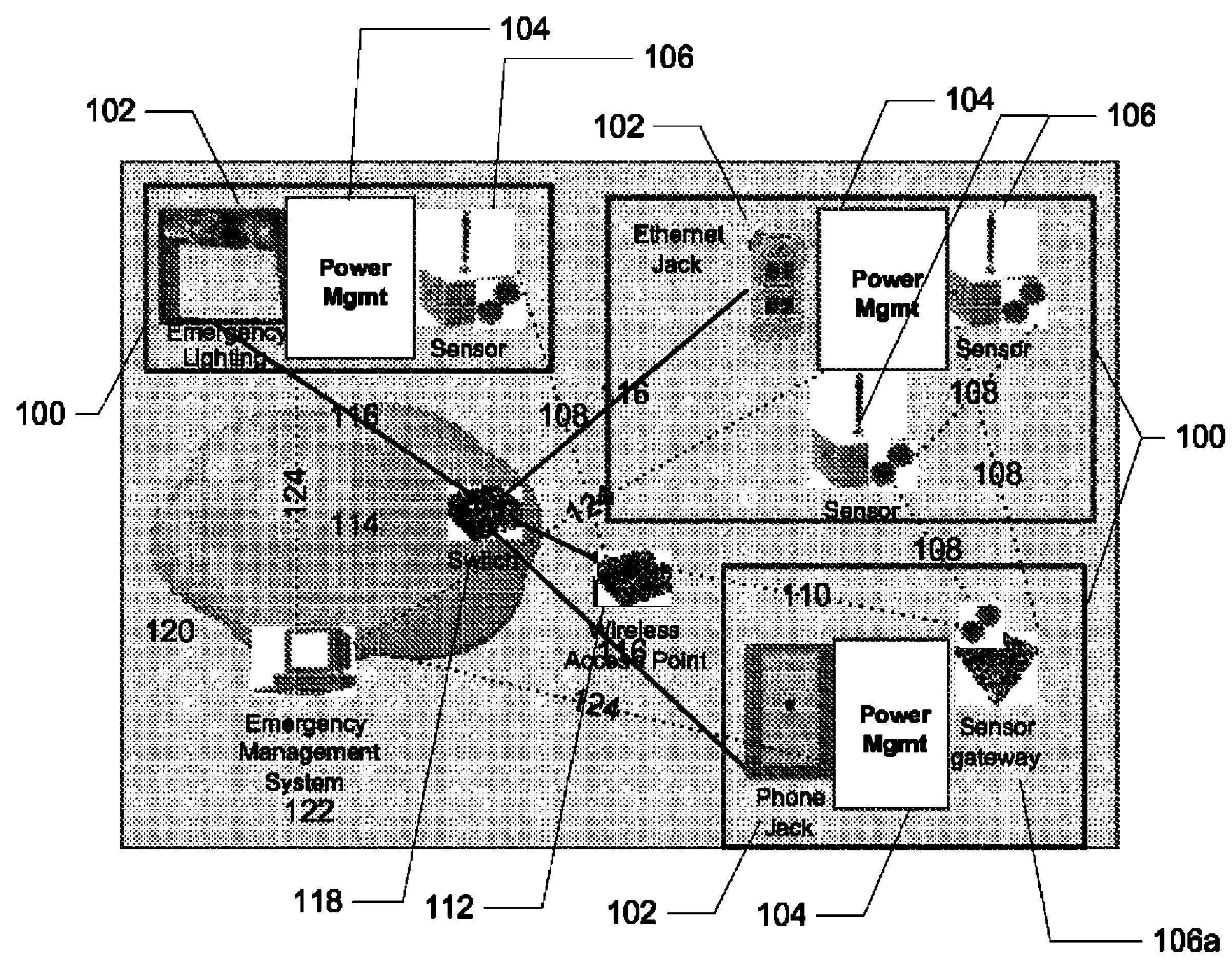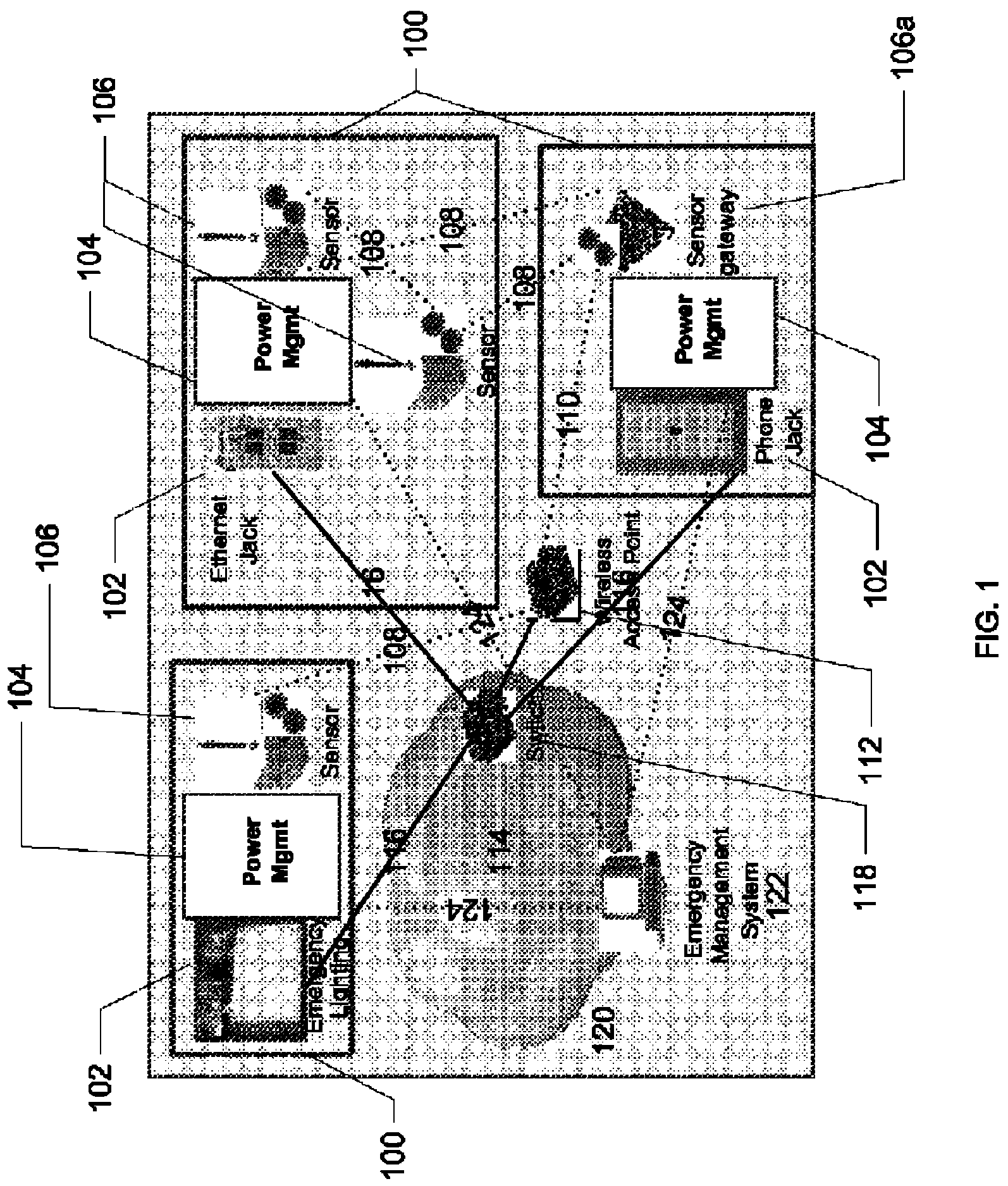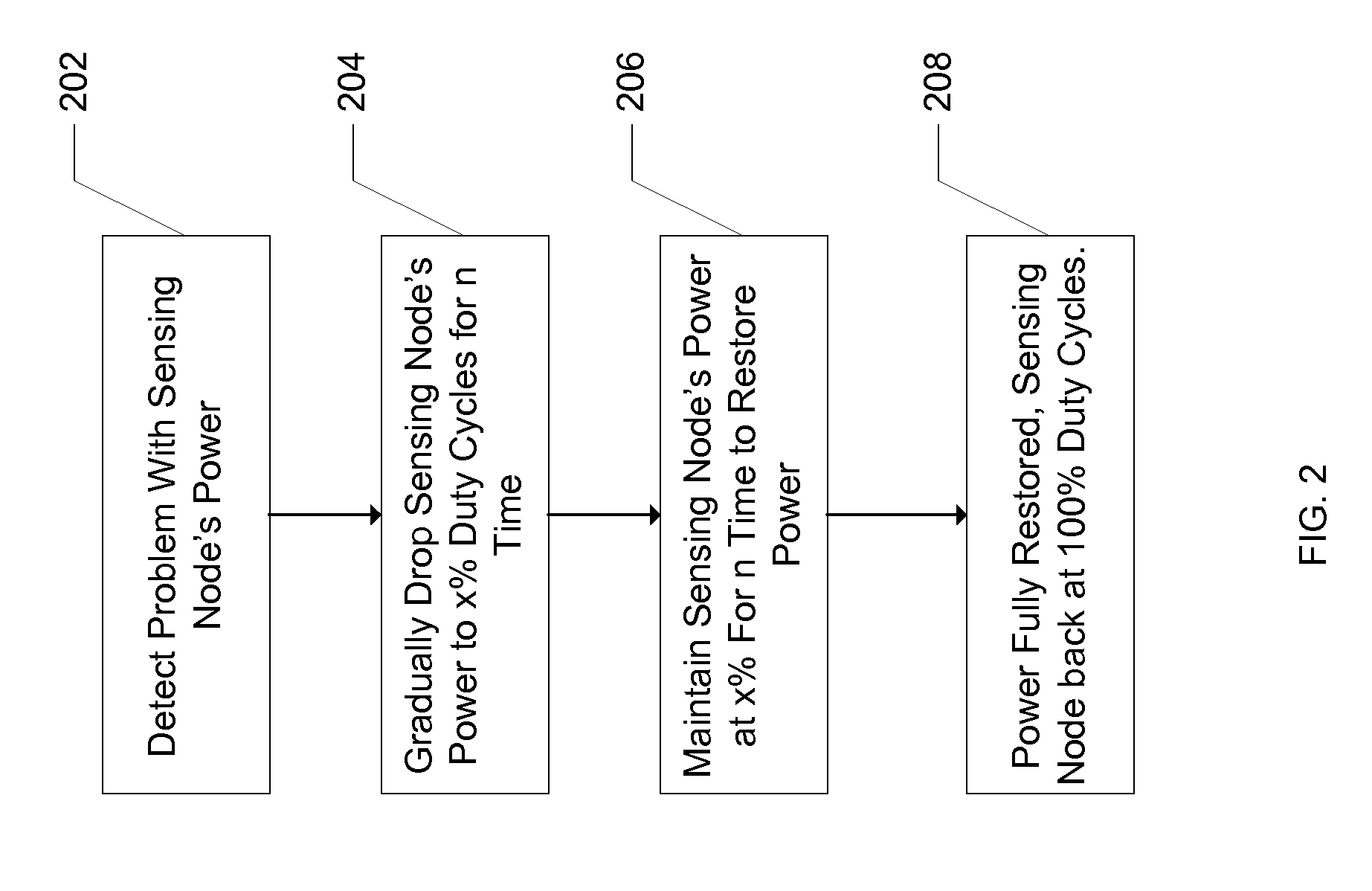System and method for providing power management in a sensor network
a sensor network and power management technology, applied in the field of sensor networks, can solve the problems of difficult rechargeable batteries, critical power management, and impracticality for sensor networks with a large number of sensors
- Summary
- Abstract
- Description
- Claims
- Application Information
AI Technical Summary
Benefits of technology
Problems solved by technology
Method used
Image
Examples
Embodiment Construction
[0026]Referring to FIG. 1, which shows schematically a system for managing power of a sensor network according to an embodiment of the present invention, a sensor network 100 comprises a plurality of sensing nodes 106. For simplicity, only a few nodes are shown schematically in FIG. 1
[0027]The sensor network 100 may comprise a wide range of sensing nodes 106 such as stationary or mobile sensing nodes, where each node could be wired or wireless. Each sensing node may perform one or more distinct sensing activities such as sensing a particular physical, radiation, chemical or lighting presence, and may include RFID sensors. The sensing nodes 106 in the sensor network 100 are able to communicate with other sensing nodes in the sensor network 100 via wired and or wireless links 108 according to well known sensor network routing protocols, such as flooding, SPIN and LEACH.
[0028]As in a conventional sensor network, the sensor network 100 is structured according to known sensor network arc...
PUM
 Login to View More
Login to View More Abstract
Description
Claims
Application Information
 Login to View More
Login to View More - R&D
- Intellectual Property
- Life Sciences
- Materials
- Tech Scout
- Unparalleled Data Quality
- Higher Quality Content
- 60% Fewer Hallucinations
Browse by: Latest US Patents, China's latest patents, Technical Efficacy Thesaurus, Application Domain, Technology Topic, Popular Technical Reports.
© 2025 PatSnap. All rights reserved.Legal|Privacy policy|Modern Slavery Act Transparency Statement|Sitemap|About US| Contact US: help@patsnap.com



